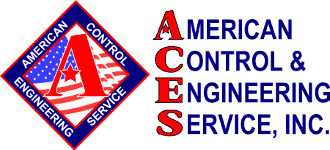THE MYSTERY
A customer called ACES to the scene of a drop bottom furnace, which was used to fabricate aircraft detail parts and components. Like all drop bottom furnaces this one was equipped with a parts basket that was lowered from the underside of the furnace into a quench tank.
The basket was programmed to drop rapidly, and then slow towards the end of its descent and ease down gently to rest on the bottom of the tank. However the client had recently swapped out the amplifier board due to an electrical surge, and after the switch the basket was free-falling at full speed all the way to the bottom of the tank and landing with a jarring thud.
THE CLUES
The first thing the ACES Control Systems Inspector (CSI) checked out was the call directing the machine to slow down. In the PLC he discovered that the slow-down limit switch wasn’t “actuating” — the unit was touching the switch, but it wasn’t tripping.
The CSI asked the client to flip the limit switch several times and witnessed it toggling in the program, so he knew it had to be something with the physical switch.
THE PERP
The CSI climbed up investigate the limit switch and ascertained that it was loose.
THE SOLUTION
The CSI tightened the switch and adjusted the physical position on the side of the machine so when the hydraulic cylinder came down it would make contact and flip the switch.
A SECOND MYSTERY
Now the basket was descending into the quench tank smoothly, but what should have been a 10-second quench was taking almost 30 seconds. It turned out that the customer had been having issues with the quench length for some time.
THE CLUES
The customer had changed out the hydraulic amplifier card. (The PLC sends out a 4 to 20 MilliAmp signal to this card, which in turn signals the hydraulic cylinder’s solenoid to move up and down.)
THE PERP
After installing the new hydraulic amplifier the customer had adjusted it, attempting to correct the time discrepancy — with no luck. The CSI combed through the program and found a map the client had for times ranging from 5-22 seconds.
THE SOLUTION
The CSI ran the machine through every possible scenario in the desired time range from 5-22 seconds (sometimes two or three times) to determine what speed was best for each time and to calibrate the positions accordingly. This required remapping all of the drop times.
The customer was under the impression that they could just walk over and adjust the amplifier if they wanted to speed up or slow down their drop times — but the CSI pointed out that for every time they adjusted the amplifier they’d have to call him in again to remap everything. Once the amplifier is tweaked, the maps are completely thrown off.
Now the drop-bottom furnace has a basket that glides into place, as well as a full complement of accurately programmed quench times that are properly controlled from the PLC, and the customer turns out aircraft components smoothly without interruption.
